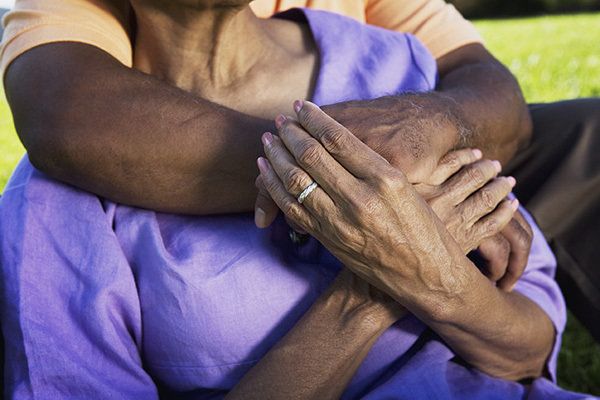
I want to thank you, again, for all your comments. Two posts relate to themes that I'd like to mention. The first has to do with the regrettable fact that some relationships that start out with such promise do end because the individuals grow apart. I will be offering some insight into why and what can be done (although sometimes just acceptance is in order) in my future blogs. The second has to do with sex and aging, a theme which appears in many private emails and as well as in the comments. Your posts remind us that wonderful sex does not necessarily end with youth and for many it is the beginning of a sexual connection that is both bigger and deeper than ever before. I love hearing about older couples' experiences because it offers such hope for healthy and positive sexuality lifelong.
This blog is about the ritual of the Sacred Marriage which so inspired me when I learned about it many years ago. I came across an image of a 3,500 year old Terracotta Plaque, found abundantly in Mesopotamia in a marvelous and richly illustrated book by Elinor Gadon called The Once and Future Goddess. It is a portrayal of the Heiros Gamos, or Sacred Marriage. The man in the image is the consort to the high priestess (or possibly a temporal king); she is the representative of the Goddess. It depicts lovers who are profoundly present to each other. He cups her head and gazes deeply into her eyes, one hand resting on her waist, waiting to be invited in. She embraces him with one arm and offers her breast with the other hand as she places one foot over his. They are equal partners in a profound erotic embrace.
In early Bronze Age cultures, the high priestess was viewed as the earthly representative of the Goddess and she performed the ritual of the Sacred Marriage with her consort who sometimes reigned as the temporal king. In later Bronze Age Mesopotamia we know that the Great Marriage (an alternate term for it) became institutionalized with the ascendancy of patriarchy and began to serve both a sacred and political purpose. From the study of the ancient city of Uruk, around 3,000 BCE, we know that the temple of Inanna served as a court of law, a healing sanctuary and a place of sacred sexual rituals.
What we know about the Celtic practices in Northern Europe is that the Sacred Marriage was one of the central aspects of the celebrations surrounding the Solstices and quarter days. Although originally it was a sexual union between the high priestess and her consort, with the onset of the patriarchal cultures, the high priestess enacted the ritual with the local lord or king. The festival following the Great Marriage rite was especially valued as a time to honor the Goddess' gift of sexuality by seeking ecstatic union with a partner. For example, on May 1st, the Beltane fires were lit at sundown and after many hours of celebrating and leaping over the fires, couples would melt away into the night to enjoy erotic pleasure which they knew was the best way to honor the divine.
The rite itself revealed to the people the deeper mysteries of sexuality. The ritual was performed in a private setting (a sacred site such as a grove or cave), but the whole community participated in the processions, singing, and prayer that surrounded and supported the success of their magical connection. The powerful energy that the couple generated was released into the universe to ensure the prosperity of the community and abundance of the land, renewing their connection to Divine Source. It was a reminder to the people of the mystery and power of sexual energy.
What followed for the entire community was a whole day and sometimes week of great joyous celebrating--feasting, drinking, dancing, singing and open enjoyment of eroticism. But the festivals that celebrated the gift of sexuality and these community celebrations of eroticism became a target of repression from the new social order, which viewed women as property and rigidly proscribed their sexual behavior. The ritual became a mystery (meaning secret in Greek) as the new dominant culture suppressed the older cultural wisdom. Although there was increasing pressure to suppress the ritual of the Great Marriage, it continued to be practiced until severe persecution and fear eliminated it except as a very secret part of societies that continued the earth honoring traditions.
There is a revival of interest in the Sacred Marriage but the term is used for at least three different phenomena. It can refer to a particularly deep spiritual connection between two people in an on-going relationship, or it could refer to the ritual I have just described, or finally it can refer to an alchemical transformation within the individual, uniting the masculine and feminine principles within one's being: the union of opposites. According to Jungian theory, every individual has both feminine and masculine attributes in a unique mix. It is the extent to which each of us has recognized and accepted both polarities that leads to personal wholeness and healthy relationships. I have created a guided fantasy which helps you imagine these polar opposite as two streams of energy; one gold and one black, moving and crossing through each chakra and joining at the crown. I'd be happy to send the script to anyone who emails me before Sept 2nd.
After that date I will be on vacation for a couple of weeks, visiting the south of France and following the trail of stories about Mary Magdalene in that region. Until then, enjoy pleasure wherever you find it.